Aristida superpendens
Domin
(A-ree-sty-da; super-pen-dens)
A tufted perennial up to 120 cm tall with narrow leaves to 1.5 mm wide (Fig. 1a & b). The basic flowering units or spikelets (Fig. 2) are usually arranged singly or in pairs along the flowering culm and held well above the leaves. Each spikelet consists of two prominent glumes and one floret (modified grass flower) (Fig. 3 & 4). The florets and subsequently seeds in Aristida superpendens are characterised by the presence of a twisted column, which originates from the tip of the lemma of the floret and separates into three long bristles or awns at the apex (Fig. 3). The two lateral awns are slightly shorter and thinner than the central or median awn. When the seeds are mature the awns are distinctly curved, the median awn is often more curved than the lateral awns. The base of the floret or seed develops a hard often pointed/sharp callus (Fig. 5).
BOTANICAL DESCRIPTION
A tufted perennial, culms terete, erect, 60 -120 cm tall; internodes glabrous (Fig. 1a & b). Leaf blade curled, filiform or linear, flat, conduplicate, involute or convolute, 15-27 cm long, 0.6-1.5 mm wide; rough to the touch. Inflorescence a panicle, branches loosely appressed, 14-34 cm long, 5-8 cm wide (Fig. 2). Spikelets solitary or occasionally paired (with one short and one long stalked spikelet), 1 flowered (Fig. 3). Glumes normal (with upper glume longer than the lower) (Fig. 4), glabrous and smooth; lower glume 8-13.2 mm long, acute, 3-nerved, upper glume 15-21 mm long, acute, 1-nerved. Lemma 8-12 mm long, with an indistinct articulation with the column (Fig. 5). Column distinct, 11- 34 mm long, <1 mm thick, rough to touch, often twisted in the seed. Awns subequal, the two lateral awns, 26-86 mm long, slightly shorter and thinner than the median awn, 35-133 mm long. Awns spreading, the median often more so than the laterals. Callus (hardened base of seed or floret) 1.5-2.5 mm long, sharp and easily embedded in clothing or wool (Fig. 5).
DIAGNOSTIC FEATURES
Most species of the genus Aristida are easily recognised by their open flowering head and the presence of three awns/bristles at the apex of the basic flowering unit/ spikelet (Fig. 3). Identifying species within the genus, however, can be much more difficult, especially if the specimens being identified are immature and lack well developed seeds.
Aristida superpendens belongs to a group of species that are identified by the presence of the following characters: a spiralled/convolute lemma, in which one side of the lemma is curled within the other; a lemma column (Fig. 3); three awns/bristles at the end of the spikelet, with the two lateral awns slightly shorter and narrower than the central awn, and the awns curved backwards at maturity. Species in the Cape York Peninsula region (CYP) which share these characteristics include Aristida dominii and Aristida warburgii (Fig. 6). From A. dominii it is identified by the life span of the individual plant, annual (only living for the year/season) in A. dominii (32-50 cm high) and perennial (persisting for successive years and seasons) in A. superpendens (60-120 cm high). Distinguishing between A. warburgii and A. superpendens can be more difficult. Typically they are separated based on the presence of an articulation, seen as a line or joint, between the lemma column and the lemma (Fig. 5). The articulation is present, but often indistinct, in A. superpendens and absent in A. warburgii (Fig. 8). Additional characters are provided in Table 1 as this character is often difficult to detect. To summarise, A. warburgii tends to have shorter awns and a shorter lemma column than specimens of A. superpendens (Fig. 7), shorter upper glumes, more bristle like and stiff leaves, and no lemma articulation. Unfortuntately, because of suspected hybridsation within the group (Lazarides 1980; Simon 1992), individuals which don’t exclusively match either species are encountered.
When immature this species can be confused with the very common Aristida holathera (Fig. 9). It is distinguished, when mature, by the differences between the lateral and central awns. In Aristida holathera the lateral and central awns are straight and similar in size and thickness.
NATURAL VALUES
Australian species of Aristida usually grow on poor sandy and red soils, are considered drought tolerant, and unpalatable to stock (Lazarides 2002; Simon 2005). As is documented for other species in this genus the sharp callus at the end of the seed is likely to be problematic to stock, especially sheep (Milson 2000; Lazarides 2002).
HABITAT
Recorded growing in Eucalyptus and Melaleuca woodlands on granite sand and alluvial soils (Simon & Alfonso 2011). Collected throughout Cape York Peninsula from the tip of the cape near Somerset* to Cooktown (Fig. 10). Few collections are documented for the western side of the cape, however, it is well collected from the upper reaches of the Mitchell River Catchment and is expected to be widespread in the region. Also known from well collected areas of the Top End, including Kakadu and Nitmiluk National Parks. Extends to Buru, Indonesia.
*The Somerset collection is from the national herbarium and not mapped on our figure.
LAND MANAGEMENT NOTES
Flowering and fruiting: January to August.

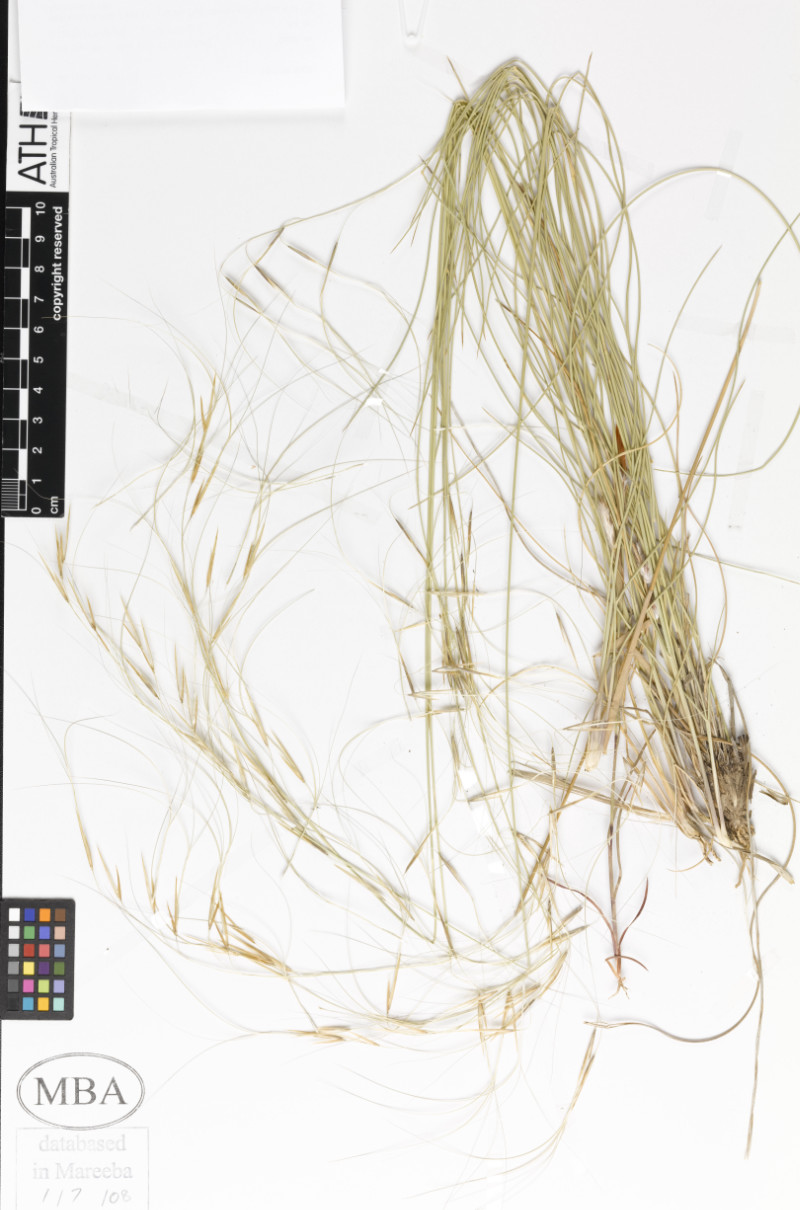
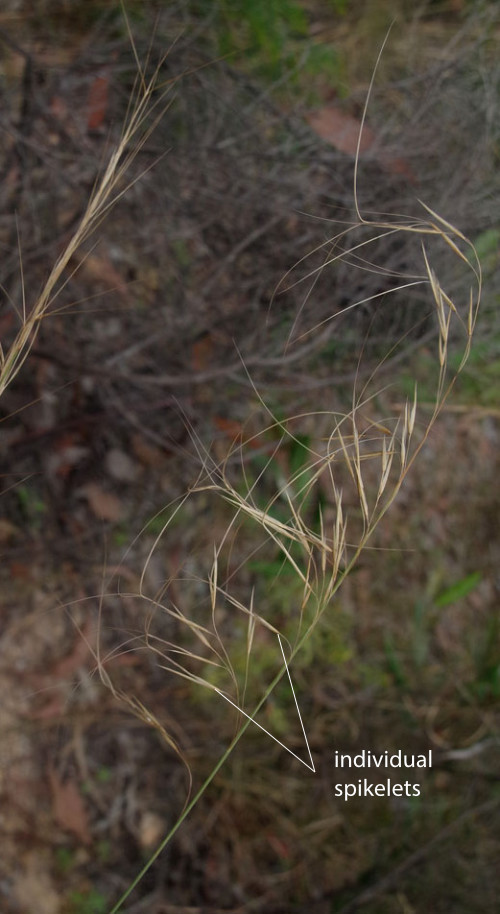

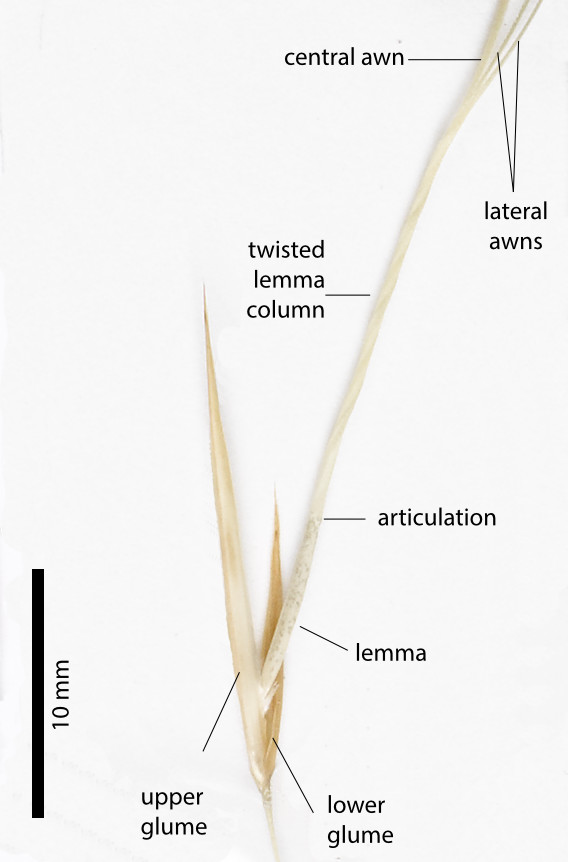
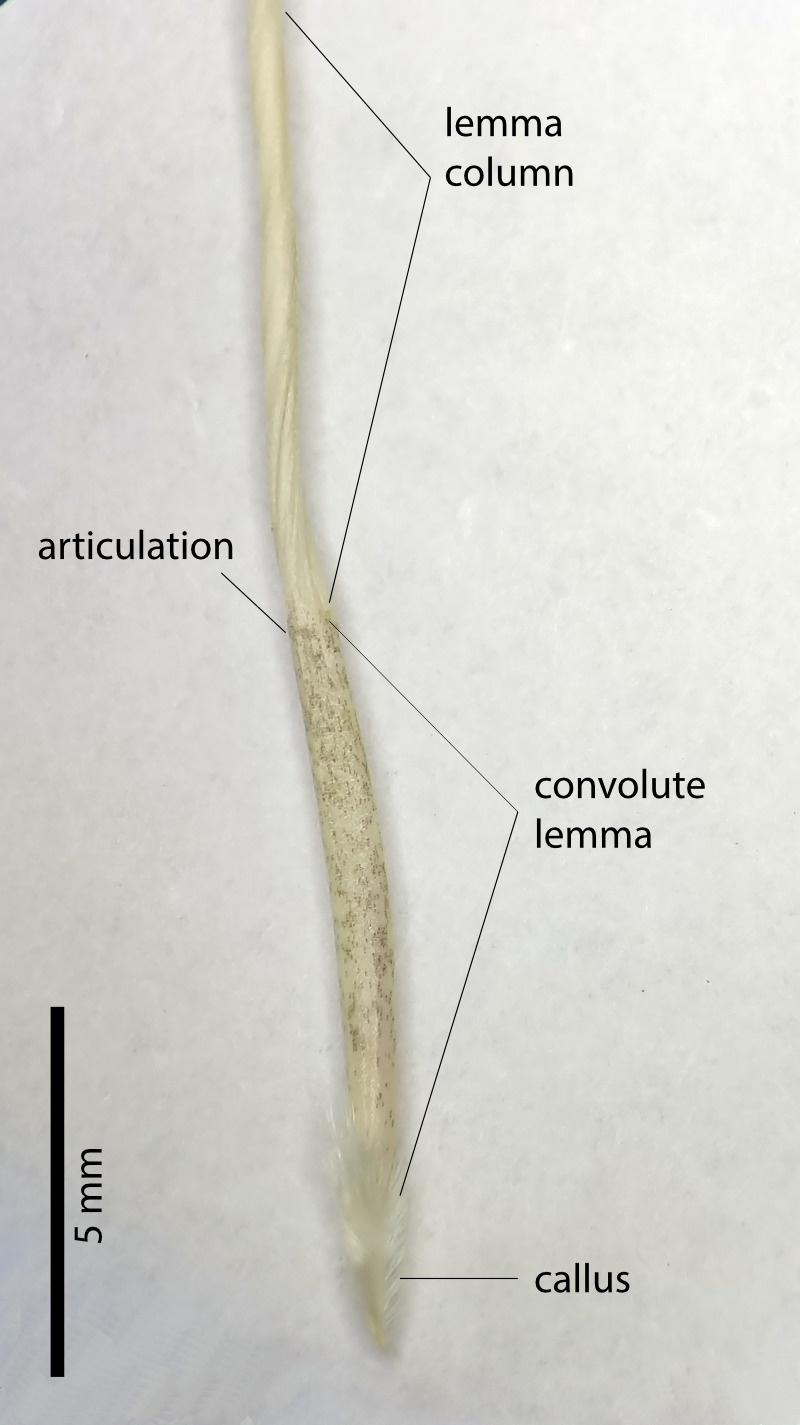

![Fig. 6. Inflorescence or flowering head of Aristida warburgii (PHOTO: Harry Rose from South West Rocks, Australia [CC BY 2.0 (https://creativecommons. org/licenses/by/2.0)]).](/sites/default/files/inline-images/Awarburgii%20Fig%206%20flowerhead1_%287458255384%29.jpg)

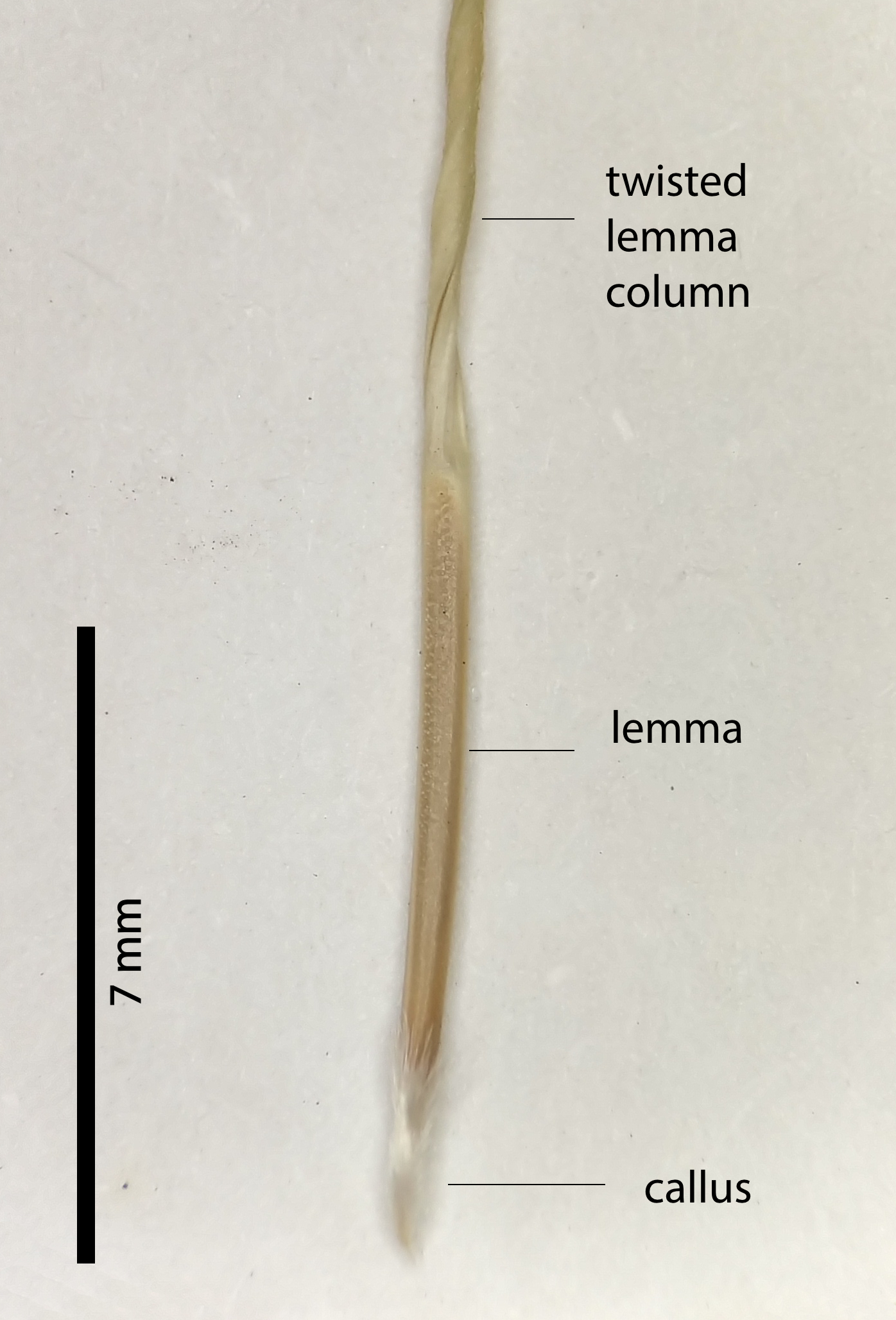
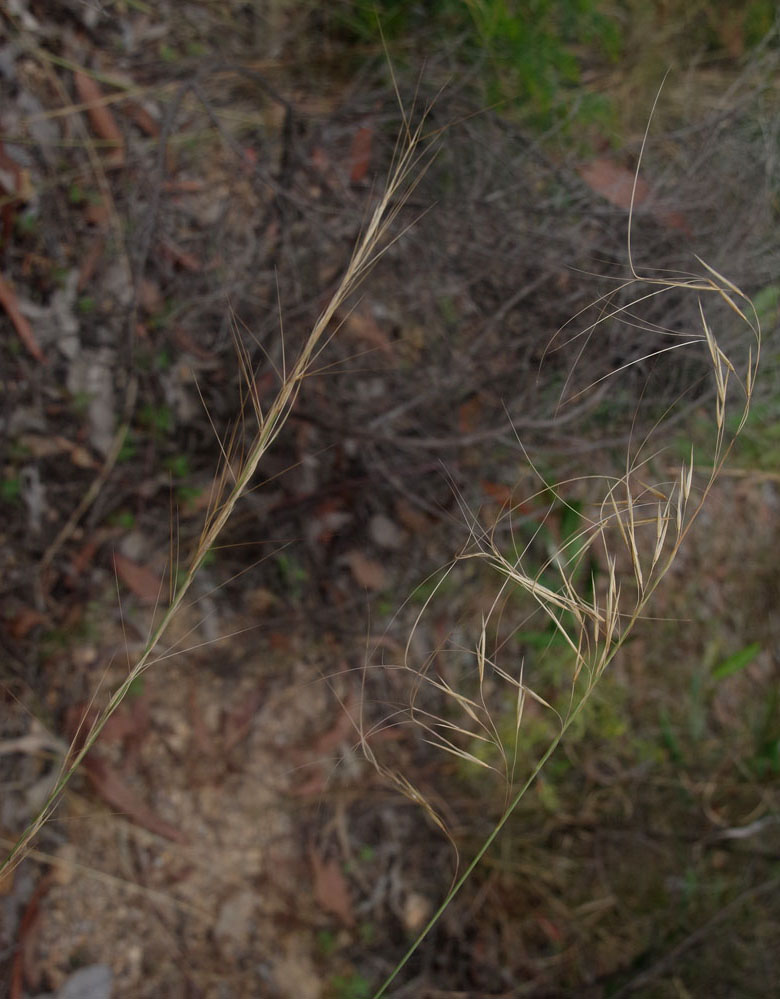
Resources
AVH (2019). Australia’s Virtual Herbarium, Council of Heads of Australasian Herbaria, <http://avh.chah.org. au>, accessed March 2019.
Lazarides, M. (1980). Aristida L. (Poaceae, Aristideae) in Australia. Brunonia 3(2): 271-333.
Lazarides, M. (2002). Economic attributes of Australian grasses. Flora of Australia 43: 213-245.
Milson, J. (2000). Pasture plants of north-west Queensland. Information Series Q100015. Queensland Department of Primary Industries.
Rolfe, J., Golding, T. and Cowan, D. (1997). Is your pasture past it? The glove box guide to native pasture identification in north Queensland. Information Series Q197083. Queensland Department of Primary Industries.
Simon, B.K. (1992). A revision of the genus Aristida (Poaceae) in Australia. Austral. Syst. Bot. 5:129-226.
Simon, B.K. (2005). Aristida. Flora of Australia 44B: 80.
Simon, B.K. & Alfonso, Y. (2011). AusGrass2, http:// ausgrass2.myspecies.info/accessed on [March 2019].

